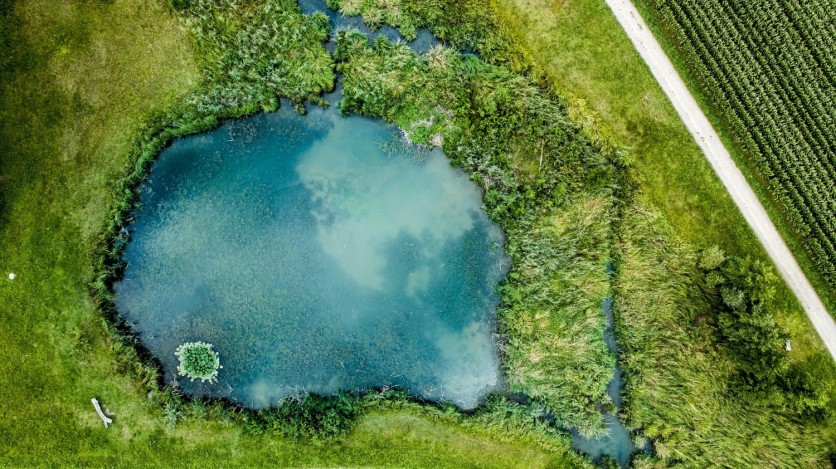Scientists have harnessed the power of artificial intelligence (AI) to pinpoint hidden sources of clean energy underground.
According to Tech Xplore, researchers at the Ohio State University have developed a deep learning model to scan the world for surface expressions of subsurface reservoirs of naturally occurring free hydrogen. This approach aims to unveil potential sources of "gold hydrogen" as efforts to move away from fossil fuels intensify.

AI Scans the Earth's Surface
The AI algorithm, which scans the Earth's surface, specifically targets the whereabouts of ovoids or semicircular depressions (SCDs) in the ground.
SCDs reportedly form near areas associated with natural or "gold hydrogen" deposits that often appear in low-elevation areas, but they can be concealed by vegetation or agricultural activities.
Recent findings have revealed the prevalence of these circular patterns in various locations worldwide, including the US, Mali, Namibia, Brazil, France, and Russia.
Postdoctoral scholars Sam Herreid and Saurabh Kaushik from the Byrd Polar and Climate Research Center at the Ohio State University led the initiative. They combined their deep learning model with global satellite imagery data to locate SCDs, leveraging known locations to train the algorithm.
The AI model can effectively pinpoint potential sites associated with subsurface hydrogen reservoirs by analyzing remote sensing data and considering geomorphic and spectral patterns.
Mapping Invisible Depressions
The AI's ability to map out these nearly invisible depressions showcases its unique role in advancing the investigation of hydrogen-related sites globally. The research represents a significant step in understanding and locating natural hydrogen, a clean and efficient energy source.
Interest in hydrogen as a clean energy alternative is growing, driven by its potential to serve as a low-carbon energy resource with minimal greenhouse gas emissions.
"Hydrogen in general is a very attractive energy source. If you burn it, its only by-product is water, and unlike wind or solar energy, hydrogen can be stored and transported, so there are all kinds of industries trying hard to make the switch," Joachim Moortgat, the project's principal investigator and an associate professor of earth sciences at Ohio State, said in a statement.
Despite hydrogen's potential, locating viable deposits presents challenges. The AI tools developed by the research team offer a proactive approach to mapping potential hydrogen sources globally. However, distinguishing real hydrogen deposits from other circular land features, such as lakes or crop circles, remains a hurdle.
While Europe is already exploring its gold hydrogen stores, the US is incorporating provisions for clean energy production in legislation like the Inflation Reduction Act.
Despite the swift progress, integrating natural hydrogen reservoirs into the global energy landscape will take several more years. Researchers emphasize the need to deepen the understanding of hydrogen systems and investigate the formation of SCDs to accelerate the transition to clean energy.
"The biggest challenge is that we need to find more SCDs and then really investigate how these things form," Moortgat said. "Once we discover a lot more, we will be in a better position to again use AI tools to find similar ones worldwide."
The team's work was presented at this week's annual meeting of the American Geophysical Union.
Related Article : Compact Accelerator Tech Achieves Significant Energy Milestone, Holds Promise for Semiconductor Industry

ⓒ 2025 TECHTIMES.com All rights reserved. Do not reproduce without permission.




